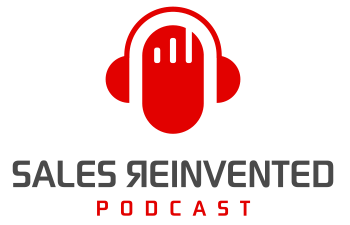Episode #380: Nick Kane

Meet
Nick Kane
Nick Kane is a founder and Managing Partner of Janek Performance Group, a leading sales performance organization providing sales training and sales consulting solutions. Nick has more than 25 years of experience in sales and is a thought leader and authority, supporting hundreds of clients in optimizing their sales performance. Nick co-authored the book “Critical Selling: How Top Performers Accelerate the Sales Process and Close More Deals,” and has penned hundreds of articles on sales performance.
Our Mission Is To Change The Negative Perception Of Sales People
Our Vision Is A World Where Selling Is A Profession To Be Proud Of
When someone Googles your name, LinkedIn is usually the first search result. That’s why you need a compelling LinkedIn profile that’s up-to-date and builds your personal brand. You get to determine how you want to be viewed. Nick Kane shares some key ways you can do that in this episode of Sales Reinvented.
Outline of This Episode
- [1:01] Is a compelling LinkedIn profile important?
- [1:46] The elements to leverage on your LinkedIn profile
- [2:58] How to tell your professional story on LinkedIn
- [3:53] Balancing professionalism and personality
- [5:04] When to update your LinkedIn profile
- [6:43] Tools to measure the impact of your LinkedIn profile
- [7:37] Nick’s top LinkedIn profile dos and don’ts
- [11:59] Build a personal brand in your desired market
How to tell your professional story on LinkedIn
Spend time making sure your professional story feels authentic and impactful—not boastful. Depending on the industry you work in, you may need to demonstrate more professionalism. Just look at your profile and content objectively and have colleagues look it over to make sure you’re striking a balance between professionalism and personality.
When to update your LinkedIn profile
You should update your LinkedIn profile anytime a major milestone happens in your career (new job title, expanded responsibilities, accomplishment, etc.). Nick has looked at numerous profiles to research a prospective candidate or client and their profile is out-of-date. It’s not a good look.
Secondly, Nick recommends looking at your profile every 90 days. Do a quick review to make sure it’s still relevant. You can tweak things to make sure you’re portraying yourself the right way. Make sure you’re sharing current and timely information
Nick’s top LinkedIn profile dos and don’ts
Nick shared some detailed dos and don’ts:
- Make sure that you’re positioning yourself how you want to be seen. Look at it from the point of view of the person viewing it. Does your personality shine through? Personal brand is a critical element that aligns with high sales performance. Your profile, descriptions, posts, who you follow, etc. gives a full picture of your personal brand.
- Use a good headshot. How do you want to be perceived? People often make an instant decision based on what they see. You need to use an image that is clear and well-lit where you look friendly and approachable. It needs to be current.
- Your headline makes an impact. What does it say about you and your experience? It must be engaging and help you stand out. Write something that will spark curiosity and encourage the reader to continue down the profile.
- List your experience in reverse chronological order. List the newest experience first. People want to see what’s most current.
- Engage with content regularly. What you write must be well-written and impactful. But you also need to engage with people. Take a genuine interest in your industry and field and comment on and share related content.
Build a personal brand in your desired market
Nick worked with a client at a global life insurance company. Most life insurance companies sell the same products and services. So what differentiates them? The people themselves.
You have to prospect to build your market and customer base. One of the ways you do this is via LinkedIn. You need to position yourself as an expert in your market. This client selected a market and positioned themselves as an expert.
Your profile must build your brand around that market so that when someone looks at it, they know you understand their challenges. This client spent time creating and posting content in the medical space. It resonated with doctors and enhanced his prospecting capabilities.
Don’t just focus on what you sell; focus on your prospect’s pains and challenges and speak to them while building your personal brand.
Resources & People Mentioned
Connect with Nick Kane
Connect With Paul Watts
Audio Production and Show notes by
PODCAST FAST TRACK
https://www.podcastfasttrack.com
Learn More About Nick Kane
Are there any definitive guides or resources you recommend for crafting an effective LinkedIn profile?
Start with LinkedIn’s official resources, guides, and articles. They often provide the latest tips and best practices for profile optimization. On Janek’s blog, the Sales Performance Blog, you can also find numerous articles that also touch upon leveraging your LinkedIn profile to network and prospect.
In the realm of LinkedIn branding and sales, who do you most admire and why?
There are a number of people that I follow and deeply respect for their LinkedIn knowledge and thought leadership. Neal Schaffer is someone who comes to mind whose thought leadership and podcast are quite interesting.
What are your top ten tips for someone looking to optimize their LinkedIn profile for sales – your golden advice set?
- Use a professional profile photo – it’s the first thing anyone will notice.
- Use a compelling headline that describes who you are.
- Update your profile frequently.
- Showcase your achievements including your professional, educational, and volunteer experience.
- Share regular content updates.
- As a sales professional, make sure your profile is easily accessible, and not just by your immediate network.
- Keep it to professional topics. LinkedIn is not Facebook or Twitter.
- Request recommendations from peers, colleagues, and clients.
- Optimize your profile with relevant keywords.
- Avoid corny buzzwords, such as “Sales Ninja” or “Marketing Guru.”
What are the primary considerations that companies should be aware of regarding their employees’ representation on LinkedIn?
- Professionalism and brand alignment. Their profiles should align with the company’s brand and values.
- Ensure that clear company branding guidelines are established and shared with all employees. They can then encourage their employees to become advocates by sharing company updates, industry insights, and relevant content.
- Be cautious about the type of information that employees share on LinkedIn, especially if it related to proprietary information and intellectual property.
- Finally, monitor employee profiles that could harm the company’s reputation.
Do you believe companies should provide specific training for employees to utilize LinkedIn effectively? Should this be a standard part of a salesperson’s induction/onboarding process?”
Yes, it’s a good idea to publish guidelines and provide training for salespeople, especially those that are less tech savvy and would lose out on this really important aspect of building one’s personal brand.
Can you share some case studies or examples of how a well-crafted LinkedIn profile has significantly impacted a company’s sales or networking capabilities?
Not a specific case study, but I’d like to share the feedback we often hear from our own clients who follow Janek Performance Group’s feed on LinkedIn and who appreciate the frequent updates we share on our LinkedIn page. All our employees are encourage to like, comment, and share these thought leadership pieces, which has resulted in a significant increase in website traffic from LinkedIn to Janek.com.
LinkedIn is constantly evolving. Are there any new features or strategies that you’re currently delving into or recommend sales professionals should explore?
I actually just covered this topic in one of my blogs about a year ago: https://www.janek.com/blog/new-linkedin-tools-for-sales/. One feature that has been added since, that’s very noteworthy, is to allow pre-publish posts up to three months in advance. It’s a feature that allows content creators to work and schedule their content on a Friday afternoon or weekend, but publish it during the work week when visibility will be greater.
How do you balance showcasing your hobbies and interests on LinkedIn, ensuring it complements your professional brand?
Showcasing hobbies and interests can lead to interesting conversations and networking opportunities. These things shouldn’t dominate your profile and brand, but sharing something you’re passionate about can help position you to be more personable.
For listeners eager to learn more, what’s the best way to connect with you on LinkedIn or other platforms?
Connect with me on LinkedIn – https://www.linkedin.com/in/nickkane/ – and subscribe to our newsletter at Janek.com to stay up-to-date on all things sales enablement!
Share This Episode, Choose Your Platform!
